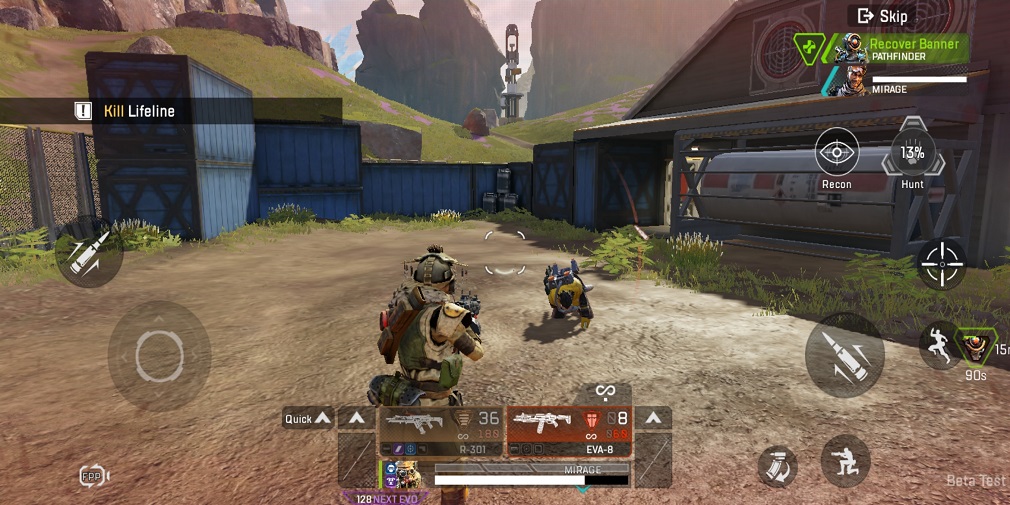Apex Legends Mobile is built from the ground up for mobile devices. Respawn combines everything from its unstoppable battle royale – vibrant style, superb sound design, a great cast and delightful firefighting. It also puts it all around in vibrant new themes designed specifically for handheld gadgets.
Not everything adapts to a different environment, however. So especially the cluttered user interface and complicated progression and currency systems. You’ll have to tinker with the settings and figure out the intricacies of such processes.
Description and subtleties
For those unfamiliar with Apex Legends, it’s a nice twist on the team battle royale formula, offering the usual battle of arms. It has a fascinating roster of characters. Most of them are well balanced and bring something new to the battlefield, depending on your comfort zone and shooting preference.
In the mobile version we get the standard Battle Royale mode, as well as a ranked option, arenas and team deathmatch, and play on slightly stripped-down versions of great maps. Ten legends, most of which hail from the game’s OG line-up, are up for grabs: Bangalore, Bloodhound, Caustic, Gibraltar, Lifeline, Mirage, Octane, Pathfinder and Wraith.
The tenth is Fade, exclusive to mobile devices, undoubtedly the most appealing to Apex fans. Using the Flash Back tactic – something akin to Ghost’s interdimensional Void or the Tracer ability in Overwatch – he can move back in time to a previous location to avoid unpleasant situations, while his passive skill speeds up this crucial glide.
However, his Ultimate is particularly intriguing, given that it allows you to throw a throwing projectile that gives your squadmates short-term invulnerability and temporarily prevents enemies from taking damage. The modes are all pretty standard, especially if you play a lot of shooters. They open up quite sensibly as the player progresses through the ranks, allowing you to get used to the speed and scope of one type of match before you can try another.

Characteristics
There is no crossplay. But if there was, it wouldn’t change the overall impression of the product much. While the game looks remarkably similar to the console version, the control scheme is definitely not. There is an effective and comprehensive tutorial when the user first enters the game.
Mirage will walk you through the basics with its usual dose of charisma – and while it would be unfair to throw problems straight at the feet of the developer, it’s possible that all the bugs were purely user generated as well. Although the early lobbies are packed with plenty of bots to give the user a head start while they get used to the controls and gameplay, no forgiving AI can withstand the frustration of pressing the wrong button, accidentally shooting or revealing a location.
It’s for this reason that it’s difficult to fully get used to Apex Legends Mobile’s on-screen control scheme. Nevertheless, the on-screen controls are fully customisable. Fortunately, the choice of a Bluetooth controller alleviates most frustrations, although controller support has yet to be fully implemented.

